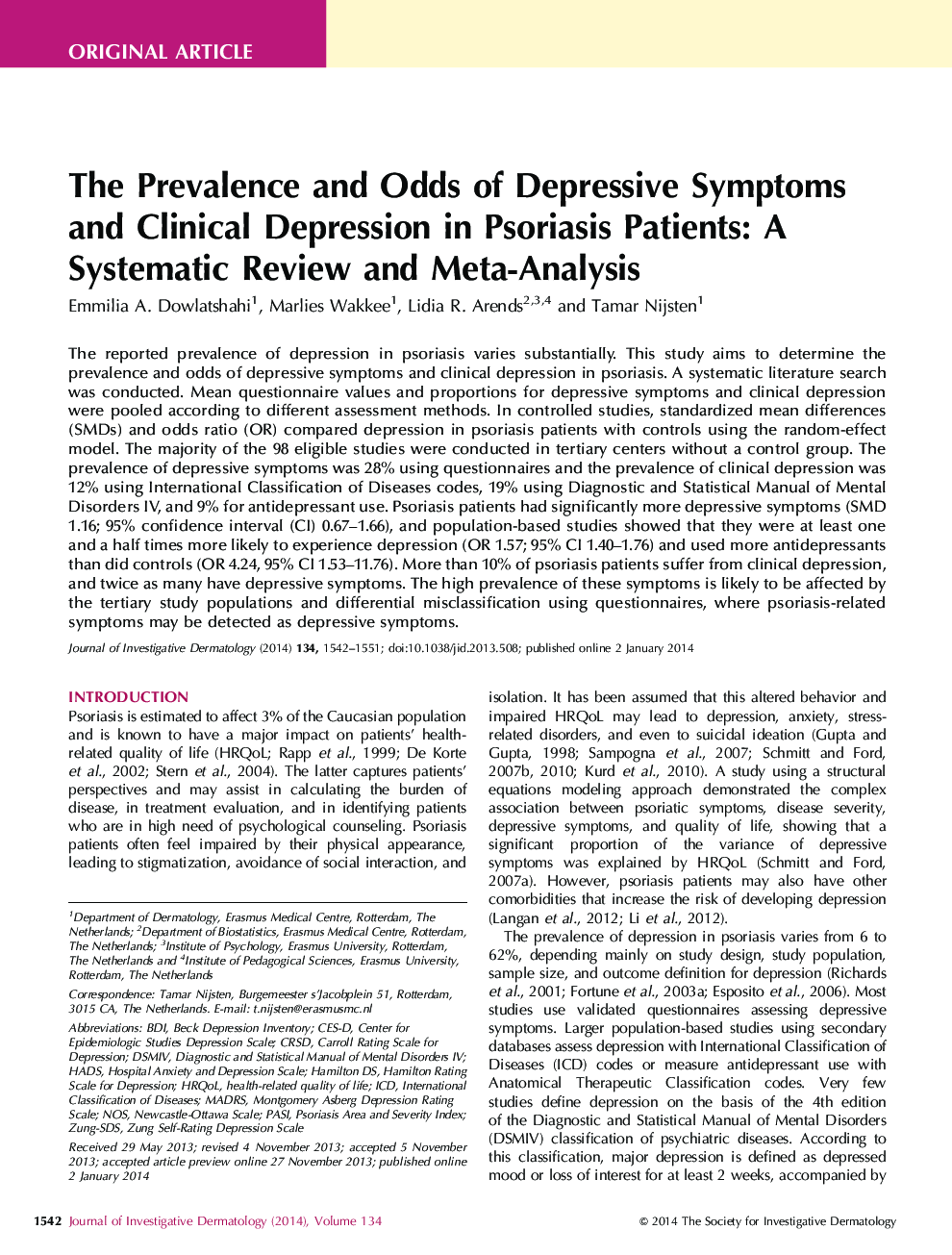| Article ID | Journal | Published Year | Pages | File Type |
|---|---|---|---|---|
| 6076507 | Journal of Investigative Dermatology | 2014 | 10 Pages |
Abstract
The reported prevalence of depression in psoriasis varies substantially. This study aims to determine the prevalence and odds of depressive symptoms and clinical depression in psoriasis. A systematic literature search was conducted. Mean questionnaire values and proportions for depressive symptoms and clinical depression were pooled according to different assessment methods. In controlled studies, standardized mean differences (SMDs) and odds ratio (OR) compared depression in psoriasis patients with controls using the random-effect model. The majority of the 98 eligible studies were conducted in tertiary centers without a control group. The prevalence of depressive symptoms was 28% using questionnaires and the prevalence of clinical depression was 12% using International Classification of Diseases codes, 19% using Diagnostic and Statistical Manual of Mental Disorders IV, and 9% for antidepressant use. Psoriasis patients had significantly more depressive symptoms (SMD 1.16; 95% confidence interval (CI) 0.67-1.66), and population-based studies showed that they were at least one and a half times more likely to experience depression (OR 1.57; 95% CI 1.40-1.76) and used more antidepressants than did controls (OR 4.24, 95% CI 1.53-11.76). More than 10% of psoriasis patients suffer from clinical depression, and twice as many have depressive symptoms. The high prevalence of these symptoms is likely to be affected by the tertiary study populations and differential misclassification using questionnaires, where psoriasis-related symptoms may be detected as depressive symptoms.
Related Topics
Health Sciences
Medicine and Dentistry
Dermatology
Authors
Emmilia A. Dowlatshahi, Marlies Wakkee, Lidia R. Arends, Tamar Nijsten,
